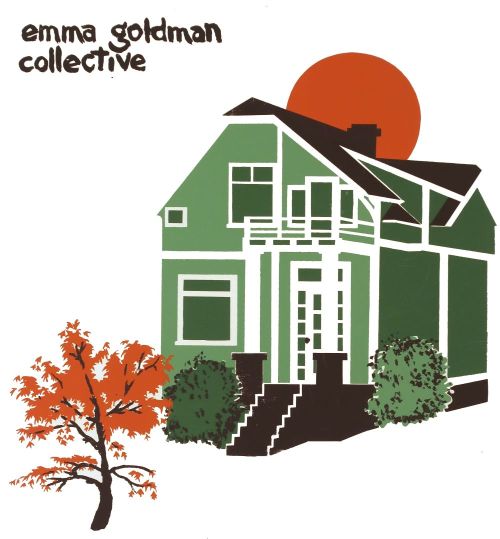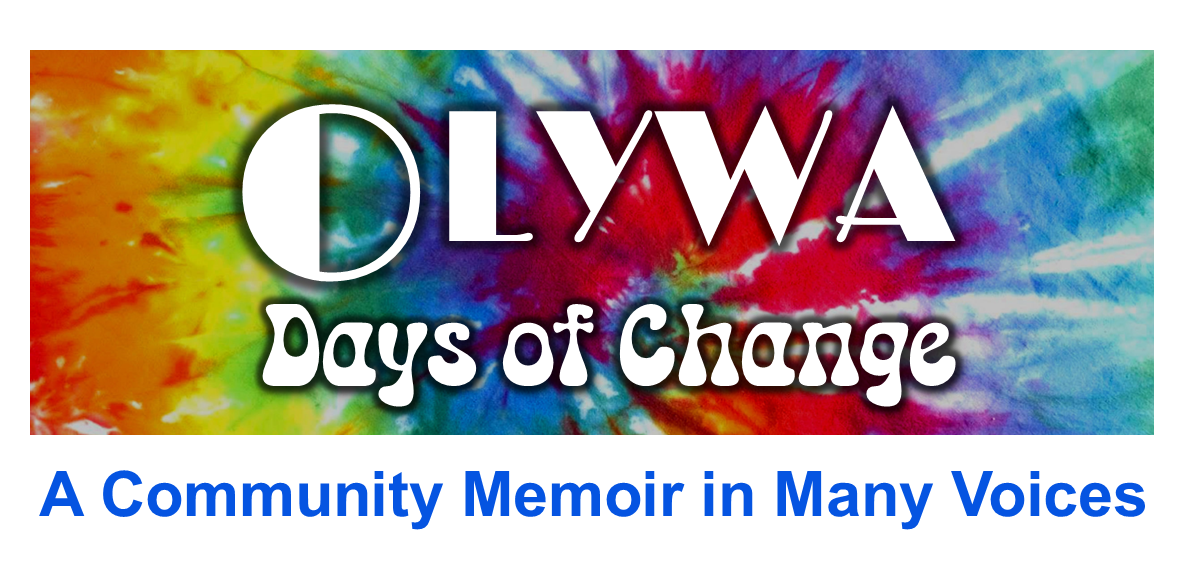FOOD
Emma Goldman Collective Joins the Co-op Movement
By Don Orr Martin
Before the current food co-op storefronts were established in Olympia, the cooperative food movement went through several changes. This is my personal remembrance of how the Emma Goldman Collective got involved in 1972. Other accounts may offer corrections and give more details about this early period.
The Emma Goldman Collective (EGC) was an early “communal” household. I convinced my college roommates to take the name in late 1972. I was inspired by friends in Pullman who had started the Rosa Luxemburg Collective, and by reading Emma’s autobiography Living My Life (she was an early twentieth-century anarchist and activist for workers’ and women’s rights). The Emma Goldman Collective wanted to be more than just a kind of new-age fraternity, so we searched for a meaningful activity our five-person household could all be part of beyond sharing chores and living expenses.

The US food industry was rapidly being monopolized by two or three mega-corporations in the 1970s. Small farms were disappearing. Farmworkers were exploited, underpaid, and exposed to horrible conditions. Migrant labor was a political football. The American diet was changing from slow-cooked, homemade meals to highly processed, convenience, and fast foods. Organic, locally produced items were not yet available in most stores. Supermarkets back then were much smaller than the Costcos and Fred Meyers of today. As a student household on a limited budget, EGC looked for grocery deals at Mark-It Foods or Safeway and often shopped at the original Olympia Food Conspiracy for bulk items. We eagerly wanted alternatives to the corporate-controlled food industry.
The first cooperative storefront I remember was somewhere off of Puget Street in a 100-year-old building that may have once been a grocery. That’s where I first met Laura May Abraham Booker and Steve Wilcox among others. EGC collectivists were enrolled co-op members but only peripherally involved, so we didn’t know many details of the operation. But it was clearly struggling. I think they didn’t have the capital or perhaps the business skills to support their expenses. About 1972, the store moved to someone’s house and then to a low-cost industrial shed downtown. I vaguely remember another move to a rugged structure behind what is now the Iron Rabbit off of West Fourth. It wasn’t long before that space was given up, too.
I attended some of the food conspiracy meetings during this period where we discussed how to keep it going and how to pay off past-due bills to various suppliers. It didn’t seem possible that we could afford rent on a building any time soon.
We hit on a different scheme—buying clubs. We formed several clubs around the greater Olympia area, each with about five or ten households. The households were diverse—students, hippies, single moms, state workers, traditional families, elder couples. The clubs were decentralized and democratically run. Representatives from each household would meet weekly at a member’s house. We had product lists from the wholesale suppliers with whom we had previous ties and we would order items in bulk, purchasing only an amount we could completely divide up, keeping no inventory. We would bid on portions of wheels of cheese from Peterson’s in Seattle, crates of milk from Flett Dairy, sacks of oats and rice from Cooperating Community Grains, boxes of fruits and vegetables from Nisqually Valley Produce. These meetings were a little like the New York Stock Exchange: initial orders were compiled, then bids were taken to increase or decrease a family’s order until we reached a case lot. People talked loudly, raised their hands, negotiated with each other. Everything was at wholesale cost. Our labor was free. We did the breakdown and distribution and it made us feel like we were getting great bargains. Of course, it was a lot of work.
Emma Goldman collectively liked the buying club scheme and felt that helping to run it could be our calling. We took on many of the management tasks initially—liquidating past debts, researching suppliers, collecting the household orders, arranging transport, and organizing the breakdown of each item. Once things got started, all the buying clubs shared in the work.
Many of our members were on food stamps so I met with the USDA program manager to see if the buying clubs could qualify to redeem them. I don’t remember the man’s name now, but he really wanted to help us crazy kids. He bent the rules as much as he could. The problem was we needed a physical address to prove we weren’t just scamming the program. I talked Bill and Richenda Richardson (highly respected in the business community) into vouching for us and letting us claim Childhood’s End as our “storefront.” Back then the art gallery was in a small space on Capitol Way. When the USDA guy came to inspect our Sunday food operation (when the gallery was otherwise closed) we set up low benches in the long, narrow space with a station for each product and a box for each family or household. We somehow won USDA approval. Being able to redeem food stamps was a major help in expanding our buying club membership.
As popularity grew, we pretty quickly needed more room and eventually a place to store items that were not picked up or claimed. I believe it was EGC that found an inexpensive duplex on East Fourth Avenue and Pear Street and rented half of it. We put in some temporary shelving and once a week all the buying club purchases were delivered there. We added a small mark up to cover the rent. We often did the breakdown out on the sidewalk in front of the duplex, attracting a lot of attention from passing cars . . . as well as from the local health department. They required everyone to get food handlers’ licenses.
At this point it was all volunteer labor, but occasionally those who put in a lot of time were rewarded with food discounts and whatever perishable item might be left over from weekly orders. I remember once, a club member returned from a trip to California with a huge box of avocados from his family’s yard. It was not a fruit I had eaten much in my life. They were picked green, so they slowly ripened in our basement. The sales of this free item helped us cover some minor expenses, but they weren’t moving as fast as they were ripening. As a result, I learned to love avocados and the many creative ways to use them.
In the spring of 1973 there was a big turnover of members in the Emma Goldman Collective. All but two of the guys who started EGC left at the end of the college quarter. Peter May and I stayed. Coincidentally, another household of students living in Mud Bay needed a place when the house they rented was sold (or was condemned) and they had to leave. And so Beth Harris, Tina Peterson, Will (Billy) Campbell, and Bill Knowles moved into EGC. There were enough makeshift bedrooms in our house for five. Bill Knowles had a dilapidated, yet semi-functional, school bus that he parked on our dead-end street and slept in. We all continued to work at the Pear Street unit and hosted weekly meetings for our Bowman Street neighborhood buying club.
In August our Bellevue landlord (who we had never met) showed up unexpectedly and was horrified to find six adults co-habiting his three-bedroom rental. We were summarily evicted. We all started looking for another house that could accommodate the six of us. I found an 1880-era, two-story Victorian on Sixth and Foote with potential, and we prepared to move. During that time there were ideological and personal tensions in the collective and much arguing. Days before the move, Bill Knowles and Tina Peterson announced that they had found another house on Foote Street just a block away. They intended to rent it and start a separate household, which they named Alexander Berkman Collective in honor of Emma Goldman’s erstwhile lover.
EGC and ABC established the Foote Street buying club which grew rapidly to include other families in the neighborhood. By 1974 the food buying club model was well-established. In 1975, EGC helped to host a community conference to discuss creating a “depot,” run by a core management team, where the now huge quantities of food could be delivered, divided up, and properly stored. However, rather than a depot, a new storefront was established on Columbia Street downtown within a year.
The members of Emma Goldman Collective changed many times through the 1970s and ’80s but we always stayed active in the co-op. Grace Cox, who moved into EGC in 1974, went on to be a co-op manager, first at the west side store and later for the east side location too.
We encourage readers to use the form below to make comments and suggestions. Disclaimer
